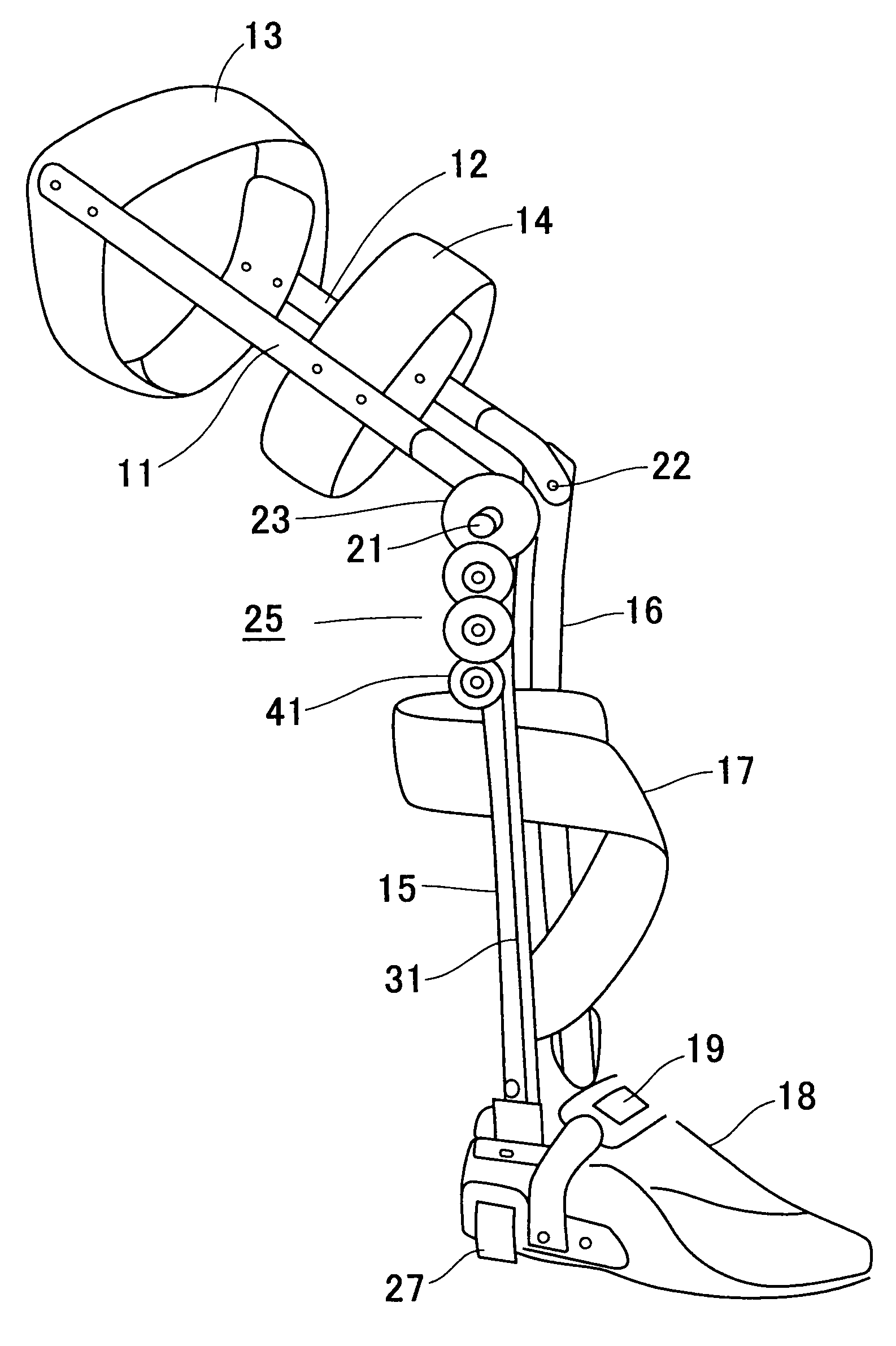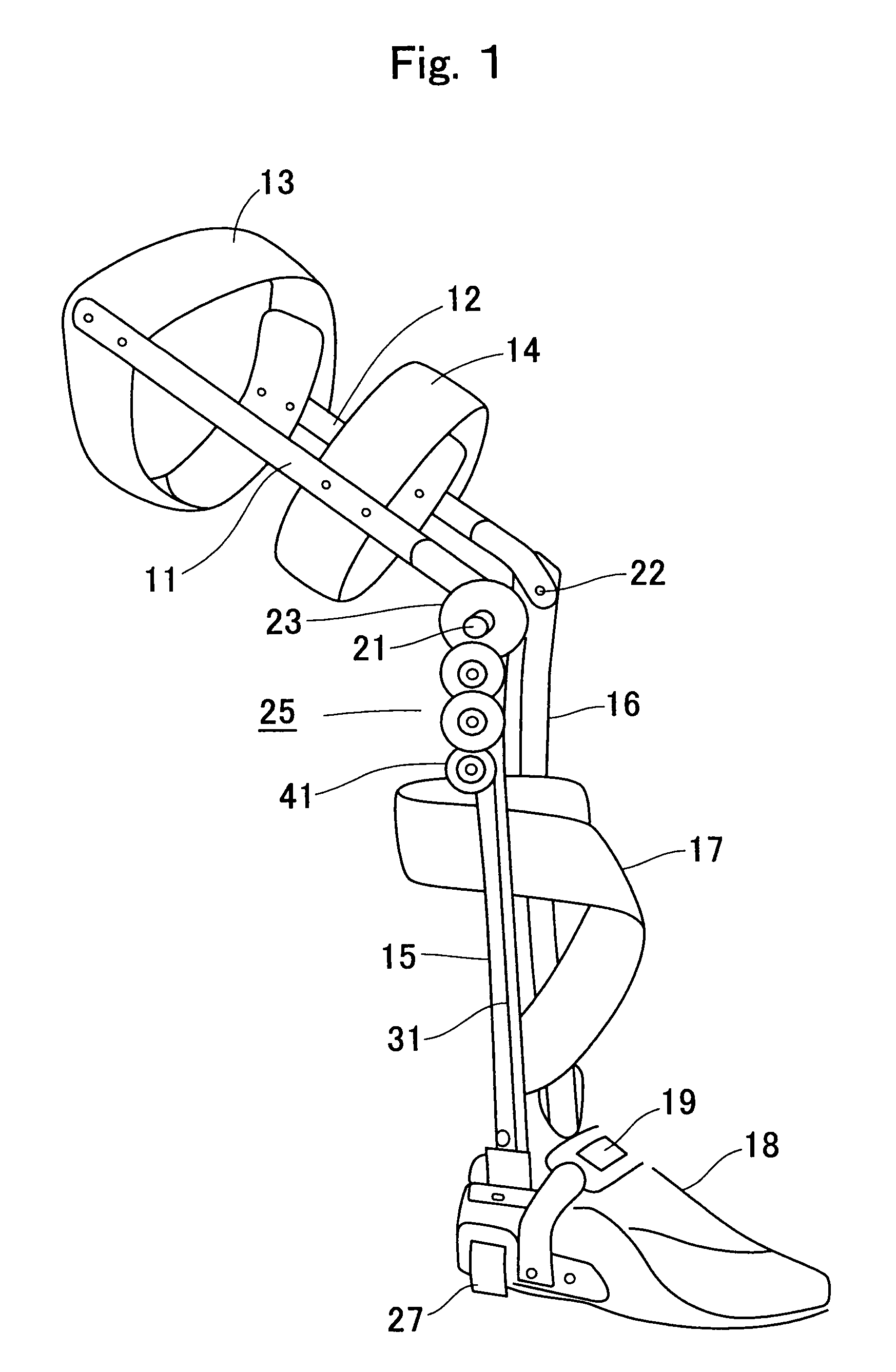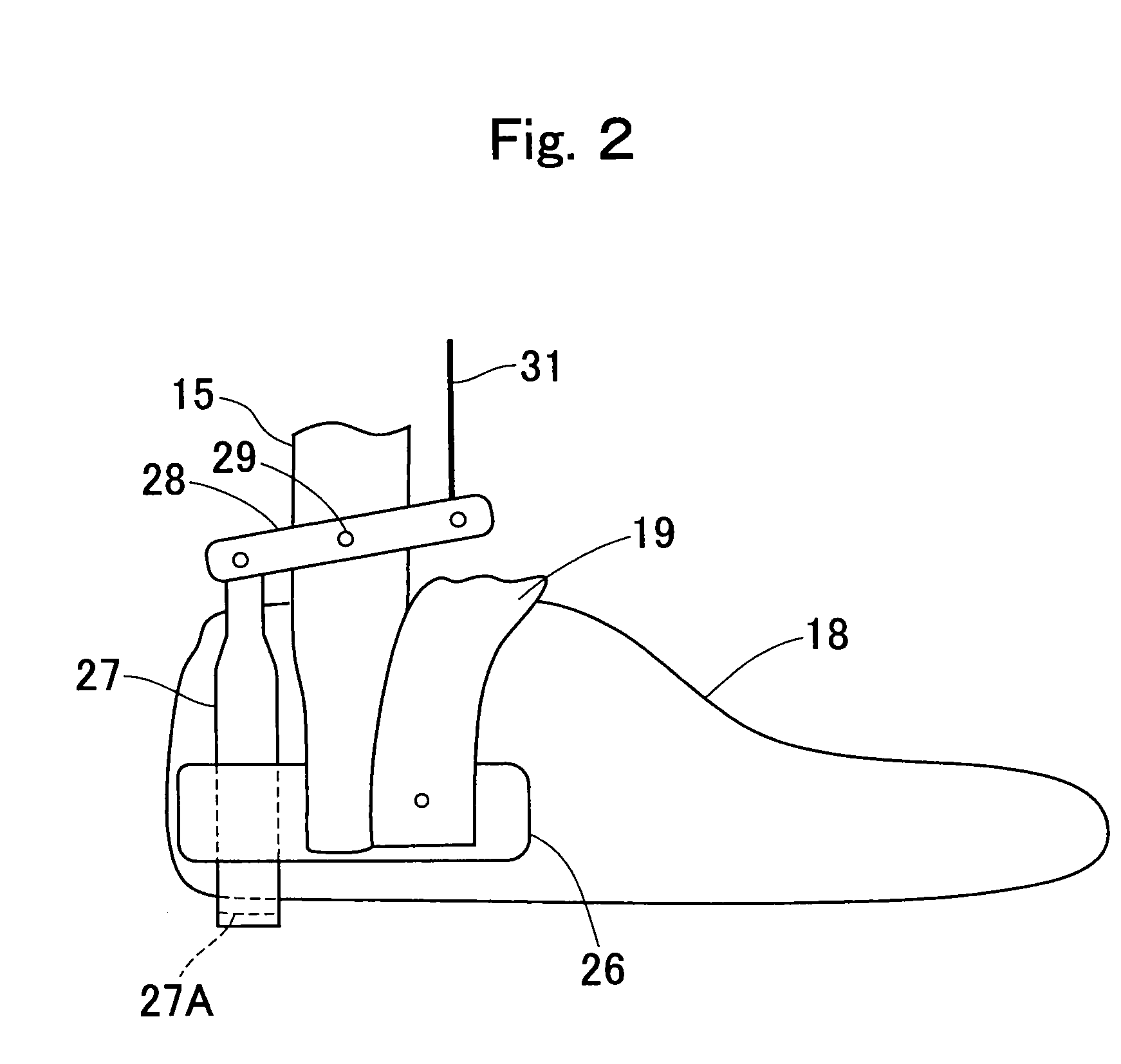Knee-Ankle-Foot Orthosis with Load Brake
a technology of load brake and knee, applied in the field of knee-ankle-foot orthosis, can solve the problems of inability to ascend stairs, excessive diameter of brake discs, and inability to move in the direction of medical science, etc., and achieve the effect of sufficient braking for
- Summary
- Abstract
- Description
- Claims
- Application Information
AI Technical Summary
Benefits of technology
Problems solved by technology
Method used
Image
Examples
first embodiment
[0042]FIG. 1 is a perspective view showing a knee-ankle-foot orthosis with load brake in accordance with the present invention. Thigh bands 13 and 14 are attached to two left and right thigh frames 11 and 12. Knee axes 21 and 22 are secured to lower ends of the thigh frames 11 and 12, and leg frames 15 and 16 are pivotally attached to the knee axes 21 and 22. A leg band 17 is attached to the leg frames 15 and 16. Afoot holding portion 18 is secured to lower ends of the leg frames 15 and 16, and a foot band 19 is attached to the foot holding portion 18. A knee axis gear 23 is secured to the knee axis 21 located on the inner side of the orthosis, and the knee axis gear 23 engages with a three-stage speed increasing gear train 25 which is rotatably supported on the leg frame 15.
[0043]FIG. 2 is a side view showing the foot holding portion 18. A side plate 26 is secured to a side part of the foot holding portion 18 to support the leg frame 15. A first lever 27 is held on a rear side of t...
second embodiment
[0049]FIG. 4 is a perspective view showing a knee axis control unit of the knee-ankle-foot orthosis in a second embodiment, in which mechanisms such as the brake drum 41, the speed increasing gear train 25, etc. are formed into a unit. FIG. 5 is a rear view of the knee axis control unit. A unit housing 70 is secured to the leg frame 15, and is formed integrally with a leg arm 71. Two screw holes 71A and 71A are provided in the leg arm 71 for securing the unit housing 70 to the leg frame 15. On the opposite side of the unit housing 70, a thigh arm 72 is pivotally supported with the unit housing 70 via a knee axis 73. Two screw holes 72A and 72A are provided in the thigh arm 72 for securing the thigh arm 72 to the thigh frame 11. In addition to the knee axis 73, a first-stage axis 74, a second-stage axis 75 and a third-stage axis 76 are provided in the unit housing 70. Two wire holes 77 and 77 are provided in a side surface of the unit housing 70 on the side of the leg arm 71, and the...
third embodiment
[0053]FIG. 7 is a perspective view showing a knee axis control unit of the knee-ankle-foot orthosis in a third embodiment, in which mechanisms including a one-way clutch are formed into a unit. A rear view is identical to FIG. 5 so as not to be specifically shown. Like reference characters will be used to designate members common to those shown in FIG. 4, and descriptions thereof will be omitted. In the present embodiment, the axial length of a final third-stage axis 91 is made slightly longer than those of the other axes 73, 74 and 75, and accordingly, a unit housing 90 is configured to have an increased wall thickness around the third-stage axis 91 for accommodating the one-way clutch.
[0054]FIG. 8 is a longitudinal sectional view of a knee axis control unit, to which the one-way clutch is added. Like reference characters will be used to designate members common to those shown in FIG. 6, and descriptions thereof will be omitted. The final third-stage axis 91 is rotatably supported ...
PUM
 Login to View More
Login to View More Abstract
Description
Claims
Application Information
 Login to View More
Login to View More - R&D
- Intellectual Property
- Life Sciences
- Materials
- Tech Scout
- Unparalleled Data Quality
- Higher Quality Content
- 60% Fewer Hallucinations
Browse by: Latest US Patents, China's latest patents, Technical Efficacy Thesaurus, Application Domain, Technology Topic, Popular Technical Reports.
© 2025 PatSnap. All rights reserved.Legal|Privacy policy|Modern Slavery Act Transparency Statement|Sitemap|About US| Contact US: help@patsnap.com



